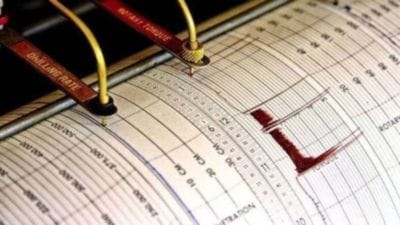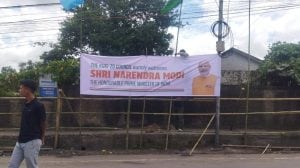15 months on, 3-state panel’s proposal of Sutlej’s hazard survey yet to see light of day
In June 2024, Punjab, Himachal Pradesh and Uttarakhand joined hands to survey flood plains to avert disaster, save lives
 The estimated cost of total Sutlej river DEM was Rs 8.92 crores (excluding unforeseen charges) and Rs 11.53 crore including unforeseen charges. (Express Photo)
The estimated cost of total Sutlej river DEM was Rs 8.92 crores (excluding unforeseen charges) and Rs 11.53 crore including unforeseen charges. (Express Photo)After the 2023 floods in the state, a joint committee of Punjab, Himachal Pradesh and Uttarakhand proposed hazard surveying of flood plains of Sutlej, Beas and Ghaggar rivers to mitigate the risk of flood-related damages in June 2024.
Over 15 months after the file related to the project started moving to different departments, the Punjab government is yet to float tenders for the project even as another disaster has struck the state.
Punjab department of water resources had then decided to take the work ahead in a phased manner and undertake the flood plain zoning of only Sutlej river by spending Rs 5.8 crore with a deadline of six months. However, the project got caught up in bureaucratic wrangling.
It was on June 26, 2024 that the State Executive Committee (SEC) headed by the then Chief Secretary Anurag Verma, and administrative secretaries of various departments decided on the project namely “provision of services for acquisition, processing and delivery of digital elevation model (DEM) and Digital Ortho-Image for Food Risk Management/ mapping of areas of Sutlej, Beas and Ghaggar rivers under state disaster response ring”. It is, however, yet to see the light of the day.
The project was prepared for flood mitigation measures by means of DEM using remote sensing techniques. By using these techniques, flood routing and topography of river basins up to 5 km from each river bank could be determined and used for better preparedness of department of water resources and local administration, so that they could conduct flood preparation work effectively.
The meeting came after Punjab, Himachal Pradesh and Uttarakhand constituted a joint committee and Centre’s recommendation that a DEM survey of rivers is required to be carried out.
For the villages near Sutlej, it was proposed that by using applications of DEM, it will help in implementing infrastructure upgrades to reinforce critical assets such as embankments and bridges, develop and implement early warning systems tailored to the local context to alert communities to impending flood risks. It was also to promote ecosystem-based approaches to flood mitigation, including wetland restoration and floodplain management, to enhance resilience and reduce vulnerability to future flood events.
The state had asked the Central Water Commission (CWC) to carry out the work of demarcation of food zoning but CWC wrote to the state on August 8 that the state government should hire a private agency for the work.
As per the original project, DEM of Sutlej, Beas and Ghaggar was to be conducted and survey of India (SOI) was approached. SOI submitted a proposal and anticipated cost of all three rives was pegged at Rs 27.87 crore with an estimated completion time of one year. Due to high cost and extended timeline of the proposal submitted by the SOI compared to the administrative approval by SEC under SDMF, it was proposed that the project be executed in phases. The DEM for Sutlej, Beas and Ghaggar river was to be carried out in phases. It was proposed that the DEM for Sutlej will be executed in 2024-25 FY.
The estimated cost of total Sutlej river DEM was Rs 8.92 crores (excluding unforeseen charges) and Rs 11.53 crore including unforeseen charges. As per the rates given by SOI in their proposal submitted to water resources department for Rs 5.84 crore, approximate length of 145 km of Sutlej was to be covered in phase one. The proposal was sent to then Special Chief Secretary cum Financial Commissioner revenue, Rehabilitation and Disaster Management, KAP Sinha on September 26, 2024 by Water Resources Secretary, Krishan Kumar.
Anurag Verma took over the post of FCR on October 10, 2024. On December 23, he wrote to Krishan Kumar saying that the Centre has introduced the SDMF in 15th FC as 20 per cent of total allocation every financial year of State Disaster Risk Management Fund. According to limitation for utilisation of SDMF as per MHA guidelines not more than 50 per cent of SDMF allocation may be utilised for measures/projects to mitigate risks for a single hazard in a year. Therefore a total of Rs 76.40 crore (Rs 64.94 crore for structural mitigation and Rs 7.64 crore for non structural mitigation) is available for this financial year for flood mitigation, which has already been sanctioned for 24 other projects.
Punjab Water Resources Minister Barinder Kumar Goyal, however, blamed the delay on the long procedure to sanction a project from SDMF. He said that it was a state government project under which they we had to spend Rs 5.83 crore. “It is wrong to say that the file kept moving and the project got delayed. The only problem was that it is difficult to sanction money from SDMF. The file has to go through three committees before it is sanctioned,” he said.
He added that the government is on the project now. “We will do it as soon as possible. It will come a long way to help us prepare for floods, save the people, crop and cattle. The Centre should have given us the right. If they have a problem then they should get the fund audited. It is the people’s money, why make the norms so strong,” he said, adding that they had to divide the work in phases only because it requires more money.
What the report stated
Punjab faced heavy floods in the past, therefore during the monitoring of rainfall status & discharge in rivers, it was felt that a devastating situation may arise this year as well if timely action is not taken. The project studied the course of Sutlej, the districts it passes through and the populated affected.
Since last year Sutlej had a heavy flow, it was difficult to monitor the discharge of floods in these systems. Even manpower was busy monitoring the periodic discharge in these systems. Therefore, it is necessity to establish a digital model to study the topography of area by DEM-based on LiDAR (remote sensing technique) in these rivers so the access timely data and provide it to local authorities and communities.








